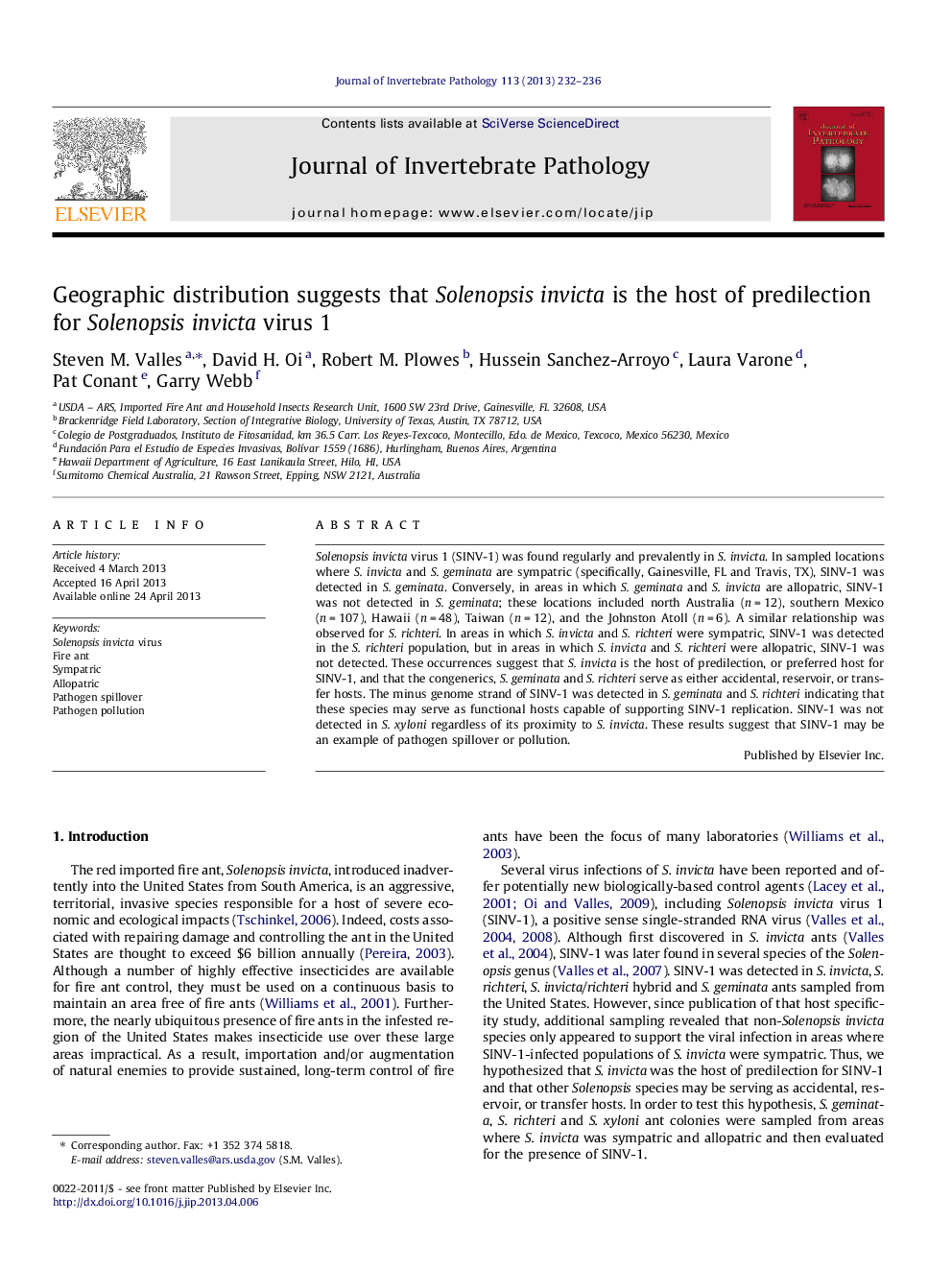| Article ID | Journal | Published Year | Pages | File Type |
|---|---|---|---|---|
| 4557815 | Journal of Invertebrate Pathology | 2013 | 5 Pages |
•Solenopsis invicta virus 1 is found regularly infecting Solenopsis invicta.•SINV-1 infects Solenopsis geminata only in locations where S. invicta is sympatric.•S. invicta appears to the preferred host for SINV-1.
Solenopsis invicta virus 1 (SINV-1) was found regularly and prevalently in S. invicta. In sampled locations where S. invicta and S. geminata are sympatric (specifically, Gainesville, FL and Travis, TX), SINV-1 was detected in S. geminata. Conversely, in areas in which S. geminata and S. invicta are allopatric, SINV-1 was not detected in S. geminata; these locations included north Australia (n = 12), southern Mexico (n = 107), Hawaii (n = 48), Taiwan (n = 12), and the Johnston Atoll (n = 6). A similar relationship was observed for S. richteri. In areas in which S. invicta and S. richteri were sympatric, SINV-1 was detected in the S. richteri population, but in areas in which S. invicta and S. richteri were allopatric, SINV-1 was not detected. These occurrences suggest that S. invicta is the host of predilection, or preferred host for SINV-1, and that the congenerics, S. geminata and S. richteri serve as either accidental, reservoir, or transfer hosts. The minus genome strand of SINV-1 was detected in S. geminata and S. richteri indicating that these species may serve as functional hosts capable of supporting SINV-1 replication. SINV-1 was not detected in S. xyloni regardless of its proximity to S. invicta. These results suggest that SINV-1 may be an example of pathogen spillover or pollution.
Graphical abstractFigure optionsDownload full-size imageDownload as PowerPoint slide
